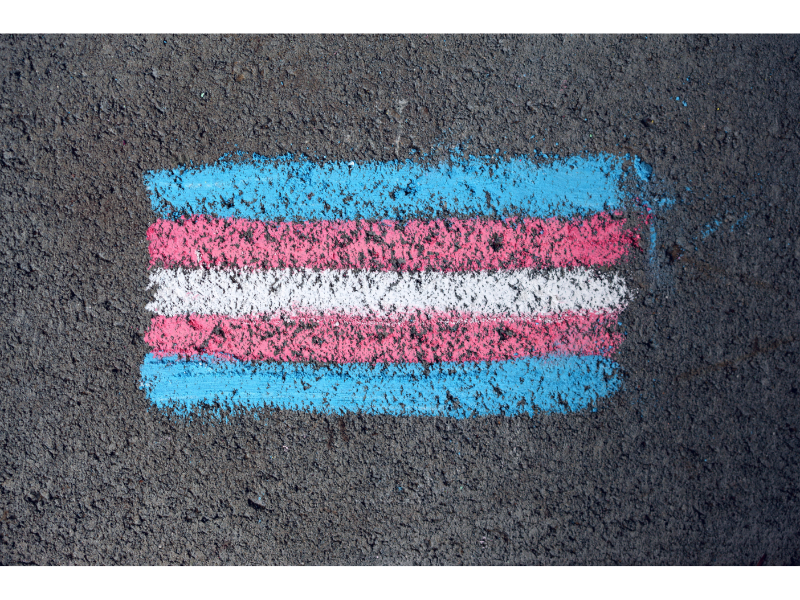
By Dr Charlotte Galpin and Dr Ash Stokoe, University of Birmingham, and Dr Gina Gwenffrewi, University of Edinburgh
“We are living in a time of trans visibility. Yet we are also living in a time of anti-trans violence.”
(Gossett, Stanley and Burton in Trap Door, 2017)
Transgender Day of Visibility (TDOV) takes place on 31st March 2022. The day should be an opportunity to celebrate trans lives, including the rich cultural production: the theatre of Travis Alabanza, the writing of Roz Kaveney, the music of CN Lester, and the poetics of Harry Josephine Giles. But instead, as in the previous year and the year before that, trans visibility seems defined in the public sphere by the legacy media and the forums and threads of social media, with trans lives poured over, studied, condemned, constructed as a permanent tabloid controversy, or a sign of a civilization collapsed in on itself, with these transgender people always asking for more. In the second half of the 2010s, trans visibility intensified in the press 414% (IPSO, 2020: 37), and that was before JK Rowling got involved, calcifying a frame of abuse with which the cisgender public could view the transgender body.
It is a visibility where the world is watching. The Council of Europe published a report in 2022 stating that trans people are the victims of a moral panic waged by a melange of anti-trans movements, the legacy media, and the political class. Warnings have grown louder over the connection between anti-trans movements and the far right, of the mutual conspiracies of ‘gender-critical’ feminists and QAnon against the ‘gender ideology’ infecting the children of the West, while Western women’s lives are no longer safe in women-only spaces, according to certain journalists and Texan politicians.
Visibility, then, has come with a price: on the one hand, the advent of social media has created revolutionary new opportunities for trans people to form communities, to have a voice and mobilise for their rights; on the other hand, this visibility has drawn backlash from those opposing the extension of rights to a previously invisible and oppressed minority.
In our work on the project ‘At the Digital Margins? researching and communicating marginalisation in online political engagement’, we are addressing the legacy and social media landscapes that marginalised and minoritised groups, and particularly, multiply marginalised trans people, are negotiating in the UK. In this blog, we ask what it means to celebrate visibility for trans people when trans people’s visibility in the media seems to code trans people as either abusers or overly sensitive victims. In highly visible cases such as J.K. Rowling’s essay-writing and social media output, trans people are imagined as in opposition to feminism and women’s rights, and as perpetrating harassment to oppress and silence women. In a different, but overlapping framing, trans people and allies are seen as embodying the ‘woke left’, a category which builds on tropes of ‘snowflake’ sensitivity, the contentious concept of cancel culture, and political-correctness-gone-mad.
In this, binarized context, it is both essential and difficult for trans people to occupy space on social media and within legacy media. Discussing trans identity and experience on social media enables trans people to dispel myths about trans lives and the aims of trans advocacy and activism. Yet, while we do not wish to contribute to discourses which position trans people as victims, or as overly sensitive ‘snowflakes’, it is important to acknowledge that the media atmospheres which trans people have to negotiate have real consequences in terms of mental health impacts and in terms of hate crimes, which have continued to increase in the UK. TransActual’s 2021 Trans Lives Survey showed a significant pattern of media transphobia, with 99% of respondents for whom the question was relevant experiencing transphobia on social media, and with a majority of respondents witnessing transphobic content in digital media (97%), print media (97%) and on the radio (85%). Further, 70% of the survey respondents felt that media transphobia had impacted their mental health to some extent, with half reporting that it impacted them ‘moderately’ or ‘very much’ (2021, p. 28).
Visibility will have different forms of significance to different trans people and their allies. As a society and as academics, we are beginning to recognize the importance of self-representation for marginalized groups and what this representation can look like as a political and activist strategy. Perhaps, in the case of trans people, one strength of visibility can be to provide snapshots into individual and collective experiences, which challenge the monolithic and binarized depiction of trans people as villains or victims.
We can look at the diversity of experience, belief, self-conceptualization, background and skillset among trans people – from Britain’s first openly trans MP, Jamie Wallis, the Conservative MP for Bridgend, to Travis Alabanza, the playwright and author, who has issued a powerful call for solidarity beyond visibility, and to trans figures, both known and unknown of the present and the past – and use this to remind ourselves that all groups and communities are multi-faceted and irreducible to fodder in a culture war.
- Find out more about Dr Charlotte Galpin
- Find out more about Dr Ash Stokoe
- Find out more about Dr Gina Gwenffrewi
- Back to Social Sciences Birmingham
